Last Updated on April 11, 2024 by April
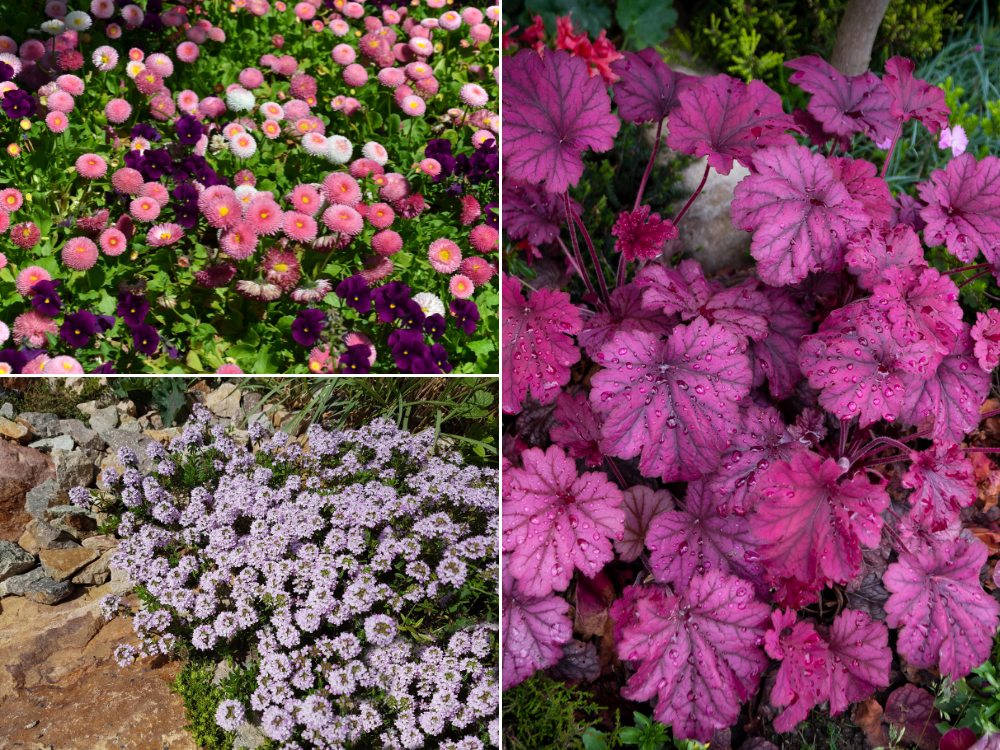
Selecting the right groundcover plants can transform a garden from a flat, one-dimensional space into a lush, vibrant oasis.
These low-growing plants spread to form a dense mat that not only adds visual interest but also inhibits weed growth, retains soil moisture, and prevents erosion.
Gardeners opt for groundcover plants in areas where traditional lawns might struggle or as an eco-friendly alternative, requiring less maintenance and water than grass.
Groundcover plants vary widely in their light and soil requirements, growth habits, and seasonal interest, making it possible to find the perfect option for any garden nook.
There are evergreen varieties that provide year-round color, as well as deciduous types that boast seasonal flowers or interesting foliage.
Some groundcovers excel in sunny spots, while others thrive in the dappled shade underneath taller plants, offering versatility to gardeners.
Choosing the best groundcover plants depends on the gardener’s regional climate, soil type, and personal aesthetic.
In addition to these practical considerations, groundcovers can be selected for their environmental benefits such as attracting pollinators or providing habitat for beneficial insects.
With an array of textures, colors, and forms, groundcovers are the unsung heroes that complete a garden’s composition.
Groundcover Plants for Shade
Choosing the right plants for shaded areas can be challenging. Groundcover plants that thrive in shade often provide lush foliage and can add interest to these cooler, darker areas of the garden.
Japanese Spurge – Pachysandra terminalis
Zones 5-9
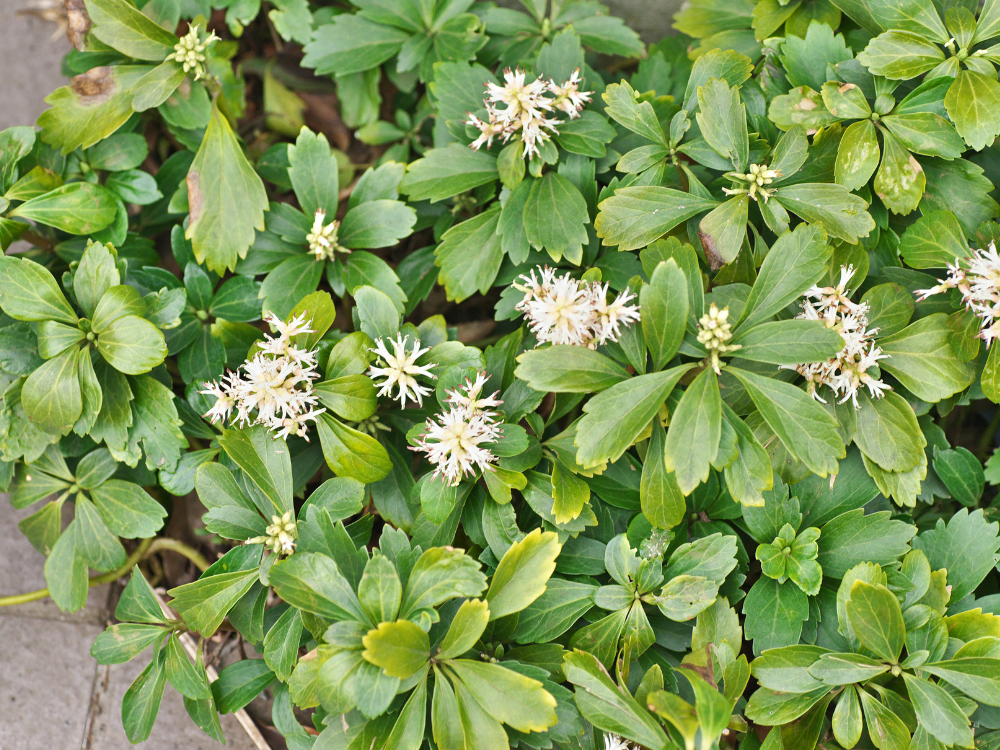
Pachysandra terminalis is a favorite for shaded areas, forming a dense evergreen carpet that’s both beautiful and low maintenance.
Coral Bells – Heuchera
Zones 4-9
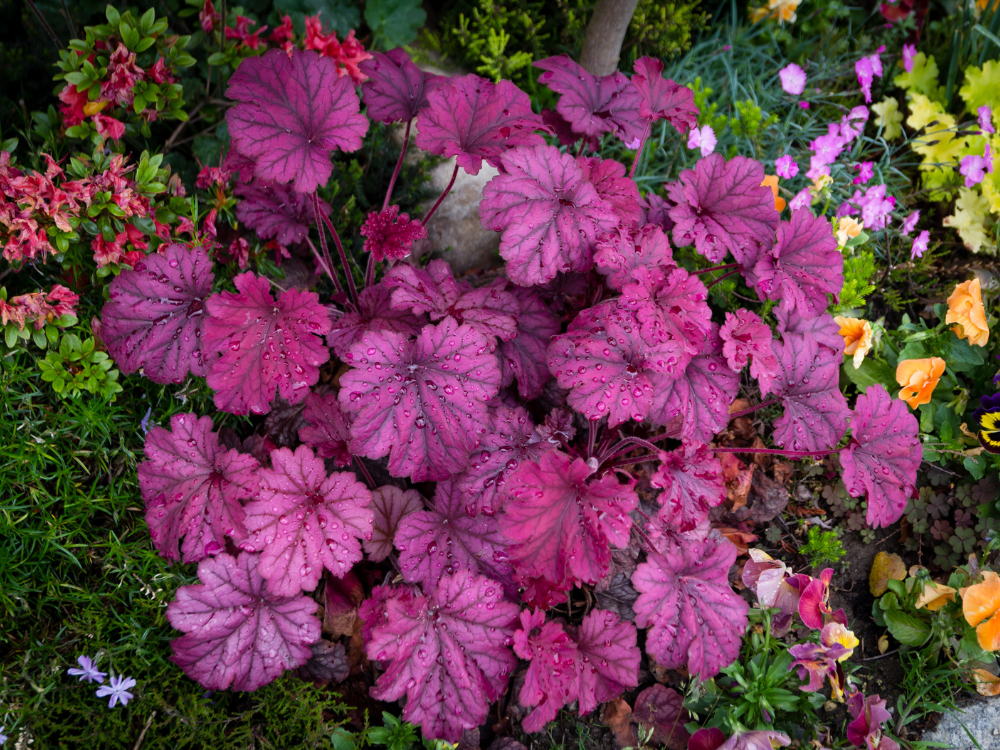
With its vibrant foliage, Heuchera adds a splash of color to shaded spots. Varieties offer a range of leaf colors from green to deep purple.
Golden Star – Chrysogonum virginianum
Zones 5-9
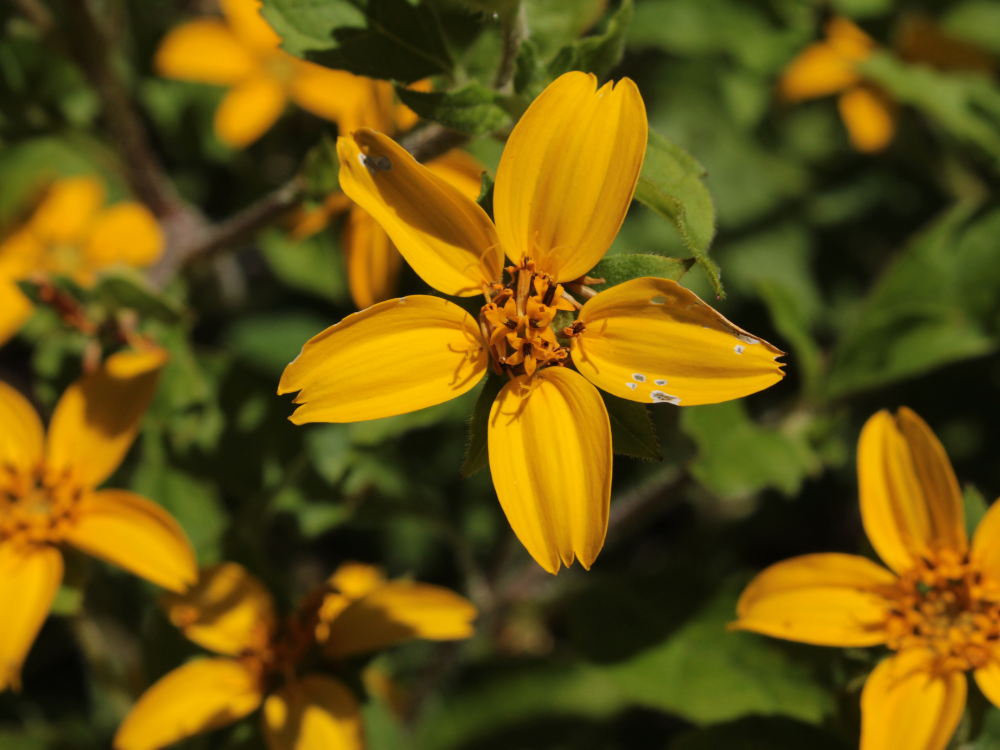
This native perennial produces bright yellow flowers, and its semi-evergreen leaves provide a striking ground cover for shaded gardens.
Mondo Grass – Ophiopogon Japonicus
Zones 7-11
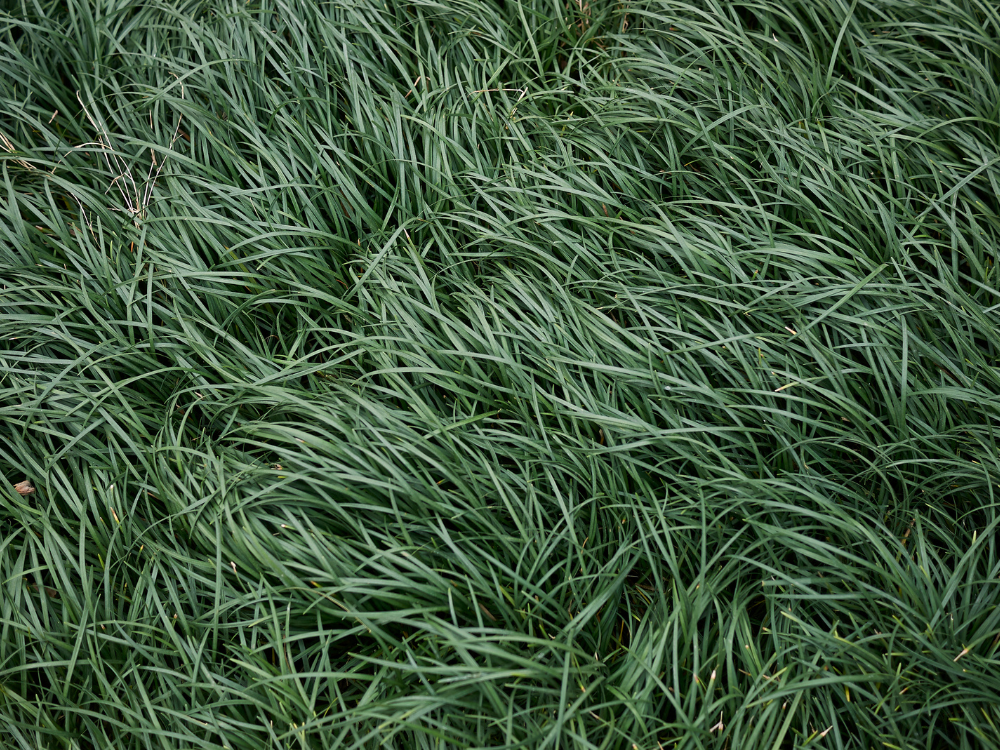
Mondo Grass is a grass-like evergreen that does well in shaded areas, with leaves that can range from green to almost black.
Bunchberry – Cornus Canadensis
Zones 2-6
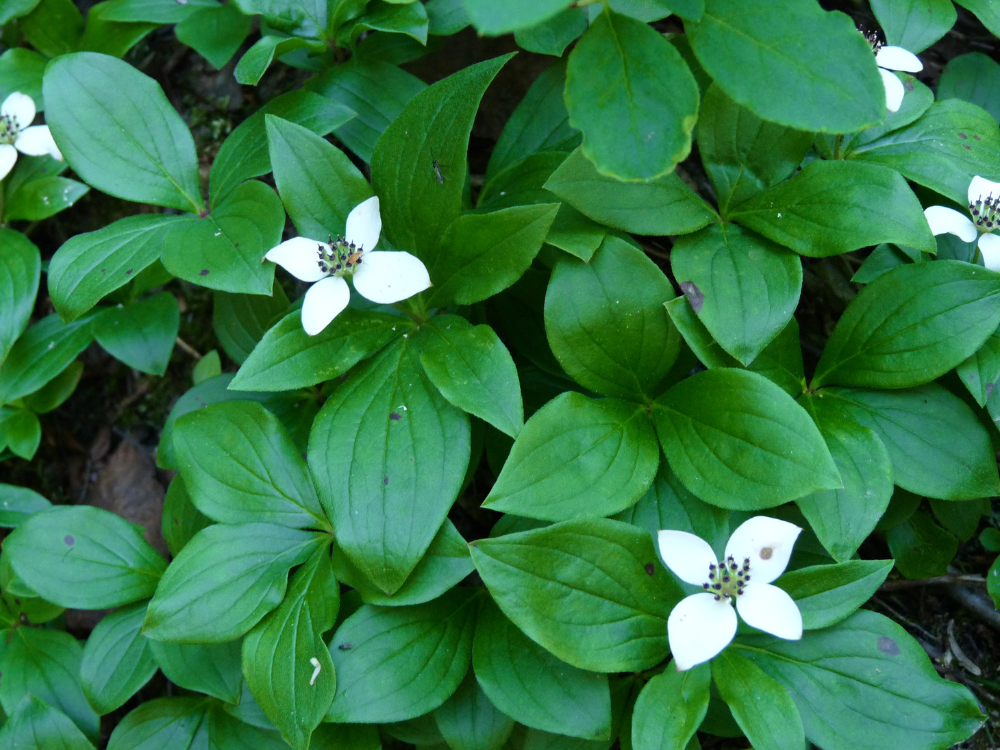
Bunchberry is a low-growing relative of the dogwood tree, featuring white flowers in spring followed by red berries.
Moss Pink – Phlox Subulata
Zones 3-9
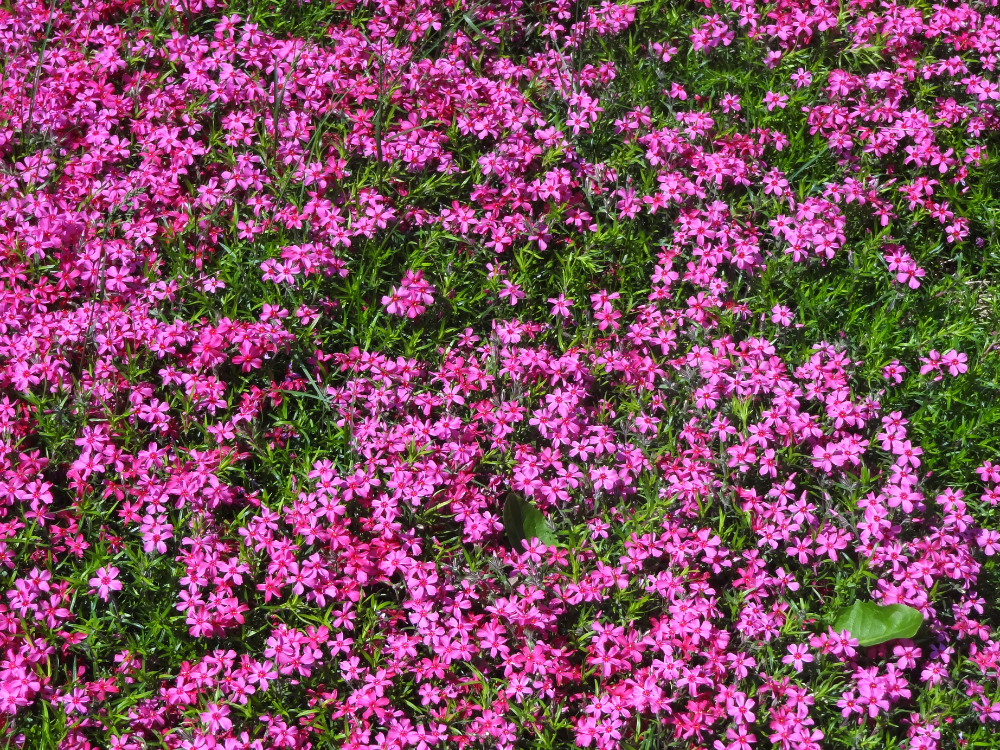
Although it prefers some sun, Phlox Subulata can tolerate shade, offering a mat of needle-like leaves and vibrant spring blossoms.
Yellow Archangel – Lamium Galeobdolon
Zones 4-9
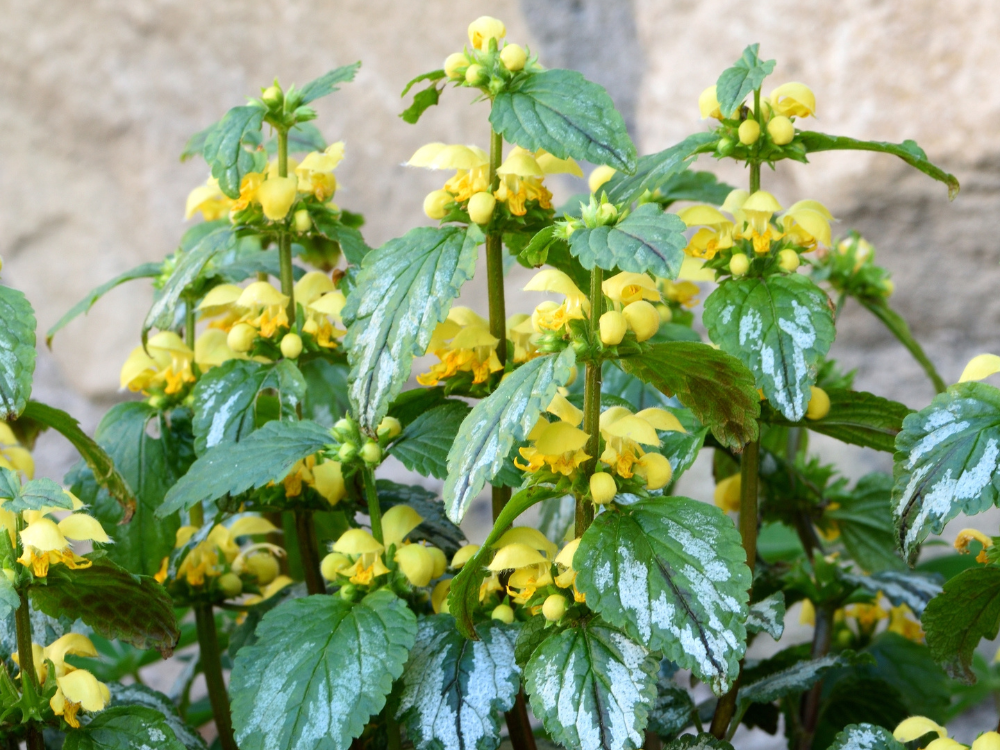
This vigorous plant spreads with silver-mottled leaves and bright yellow flowers, thriving in shaded woodlands.
Virginia Creeper – Parthenocissus Quinquefolia
Zones 3-9
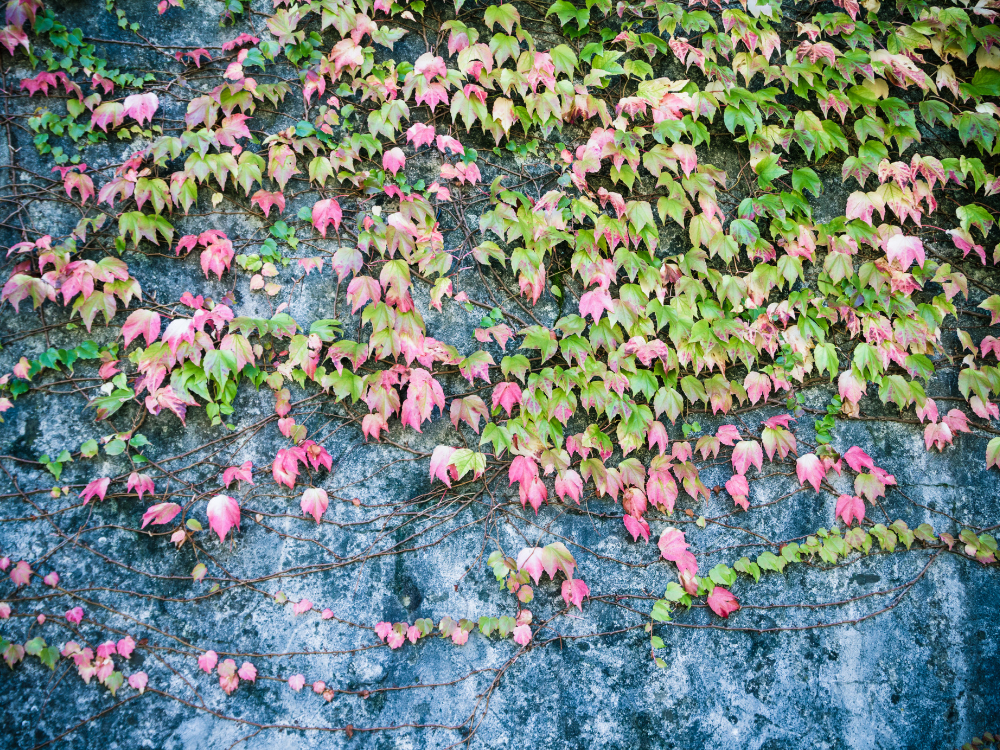
A versatile climber that also makes an effective groundcover, Virginia Creeper has foliage that turns fiery red in the fall.
Lyreleaf Sage – Salvia Lyrata
Zones 6-9
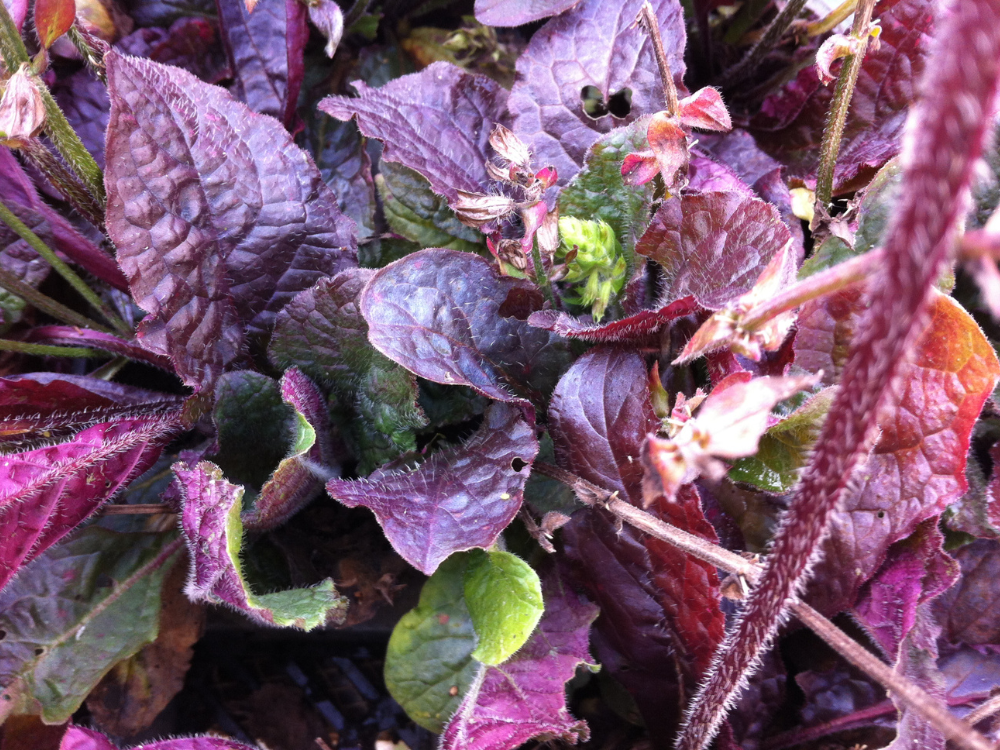
Salvia Lyrata offers attractive purple-tinged foliage and spikes of blue flowers, preferring dappled to full shade.
Stonecrop – Sedum Ternatum
Zones 3-9
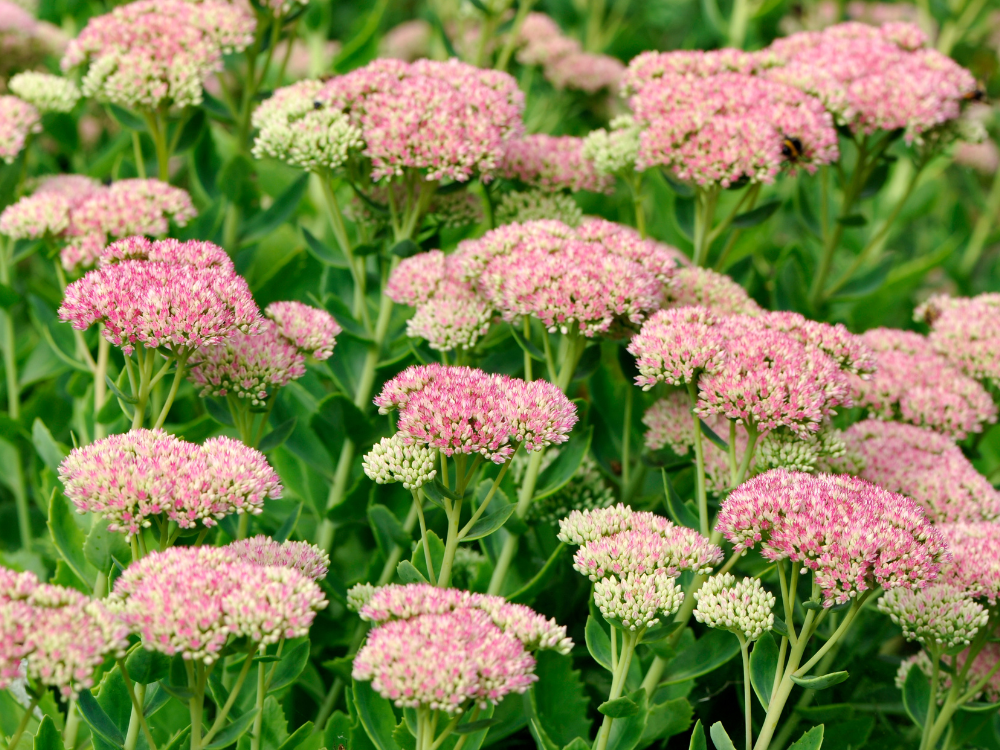
Ideal for rocky areas, Sedum Ternatum is a low-growing sedum that produces white star-shaped flowers in the shade.
Violet – Viola Sororia
Zones 3-7
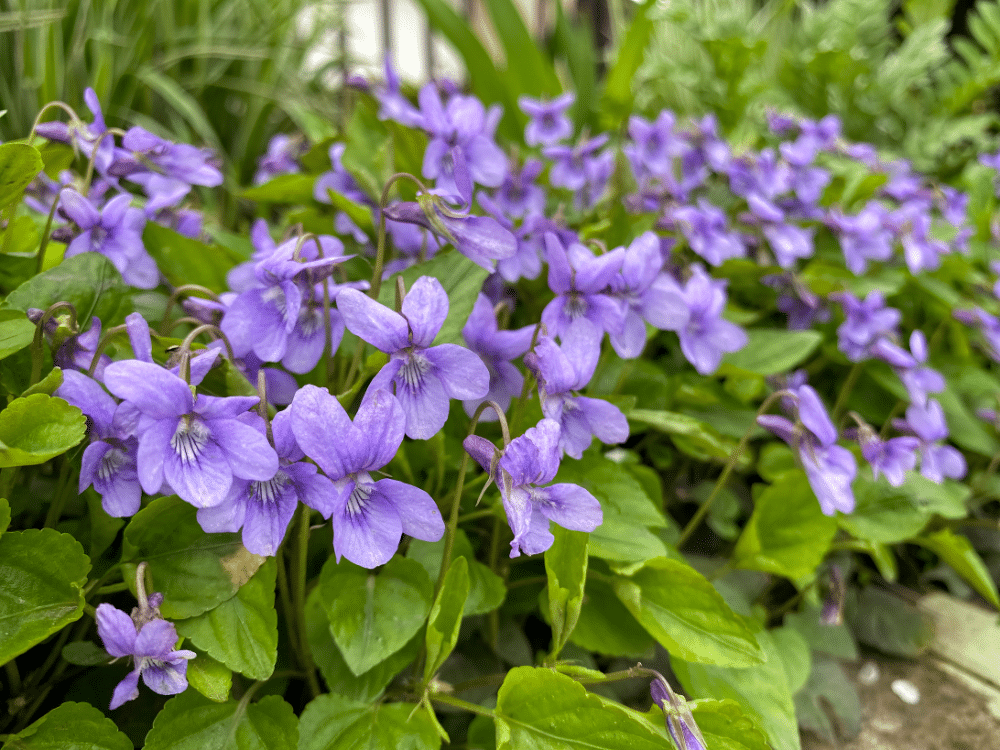
Common purple violets (Viola Sororia) are not just pretty; they’re also hardy and can form a dense carpet in shaded areas.
Heartleaf Foamflower – Tiarella Cordifolia
Zones 4-9
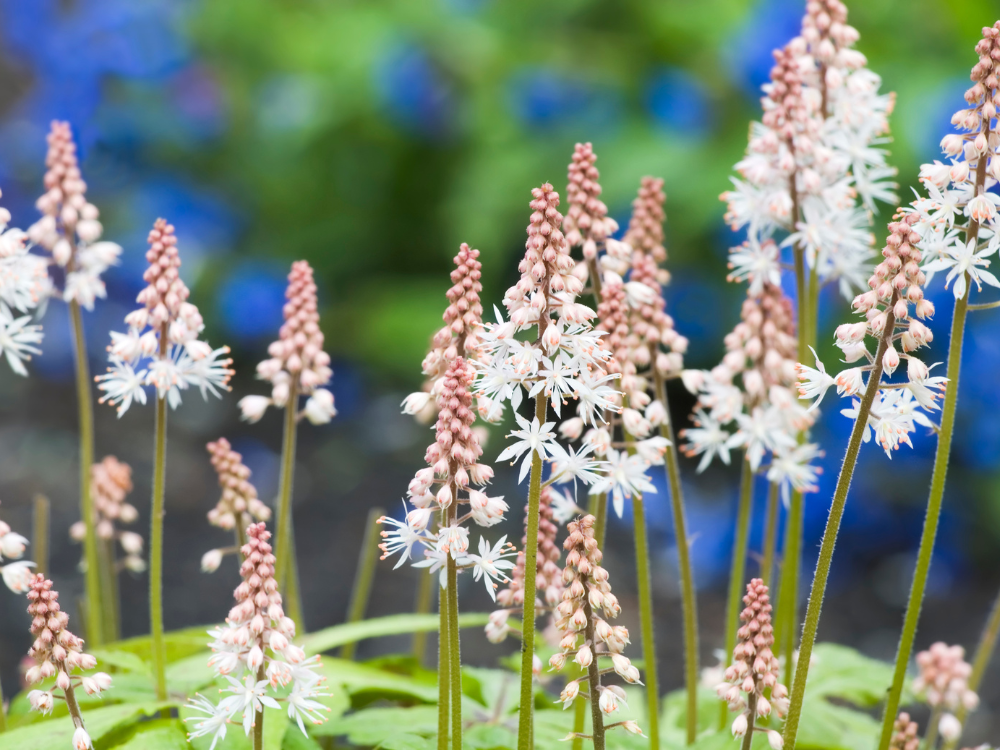
Known for its heart-shaped leaves and foamy flowers, Tiarella Cordifolia is a charming addition to any shade garden.
Sweet Woodruff – Galium Odoratum
Zones 4-8
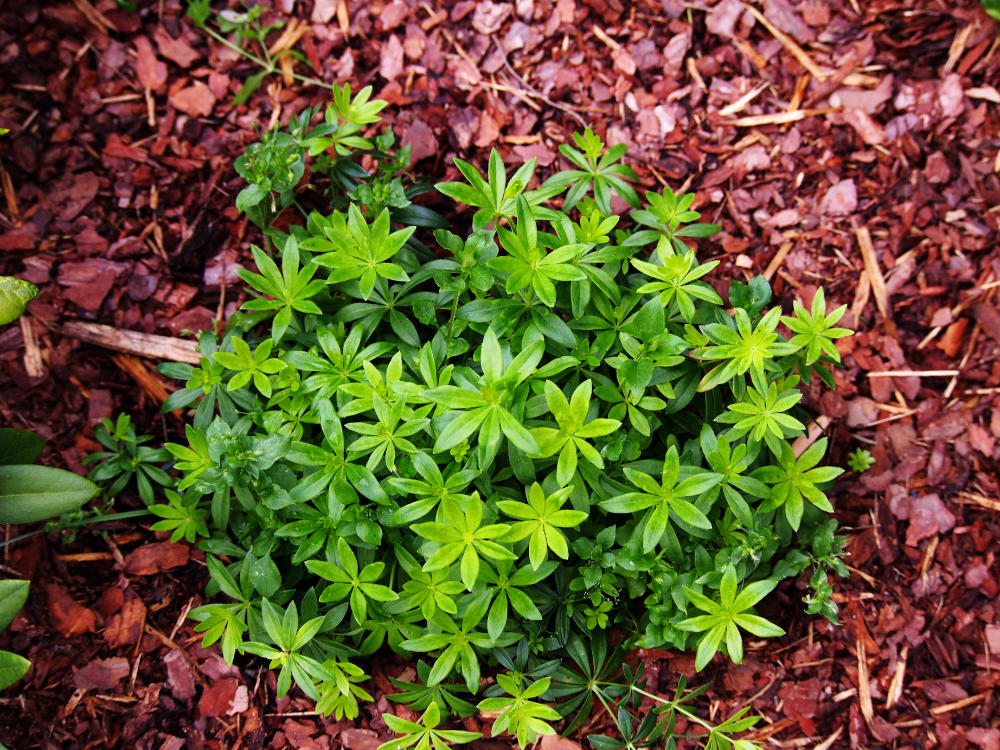
With fragrant, star-shaped flowers, Galium Odoratum is a delightful plant that can spread quickly in moist, shady conditions.
Snow On The Mountain – Aegopodium Podagraria “Variegatum”
Zones 4-9
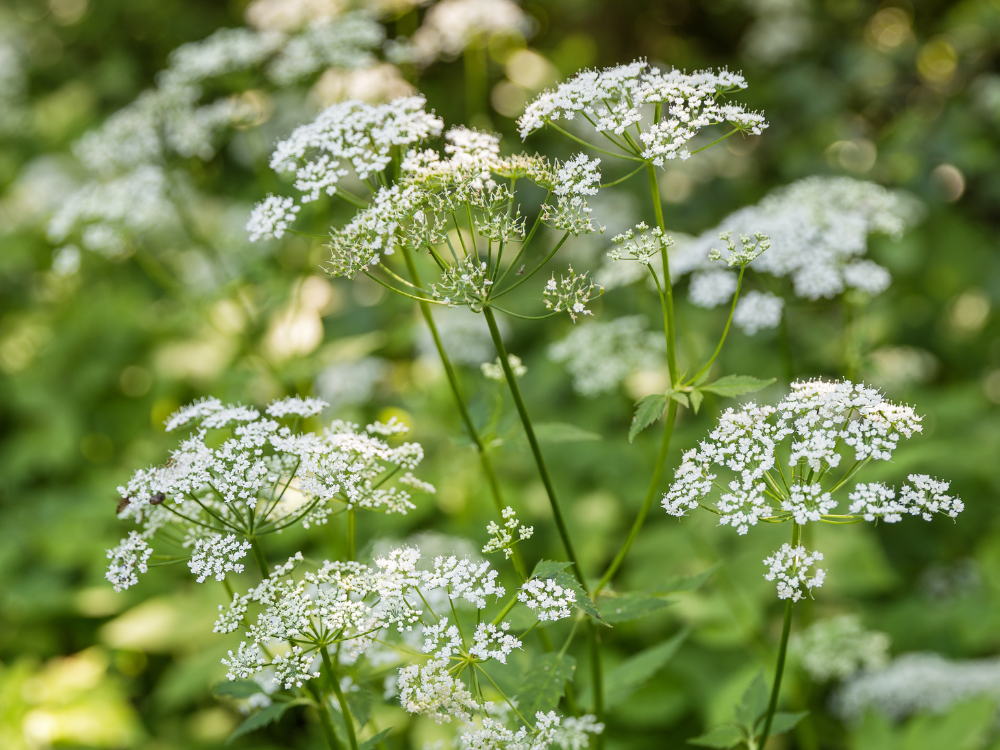
This vigorous groundcover features variegated leaves and is best for areas where it can be controlled, as it can become invasive.
Barrenwort – Epimedium
Zones 4-8
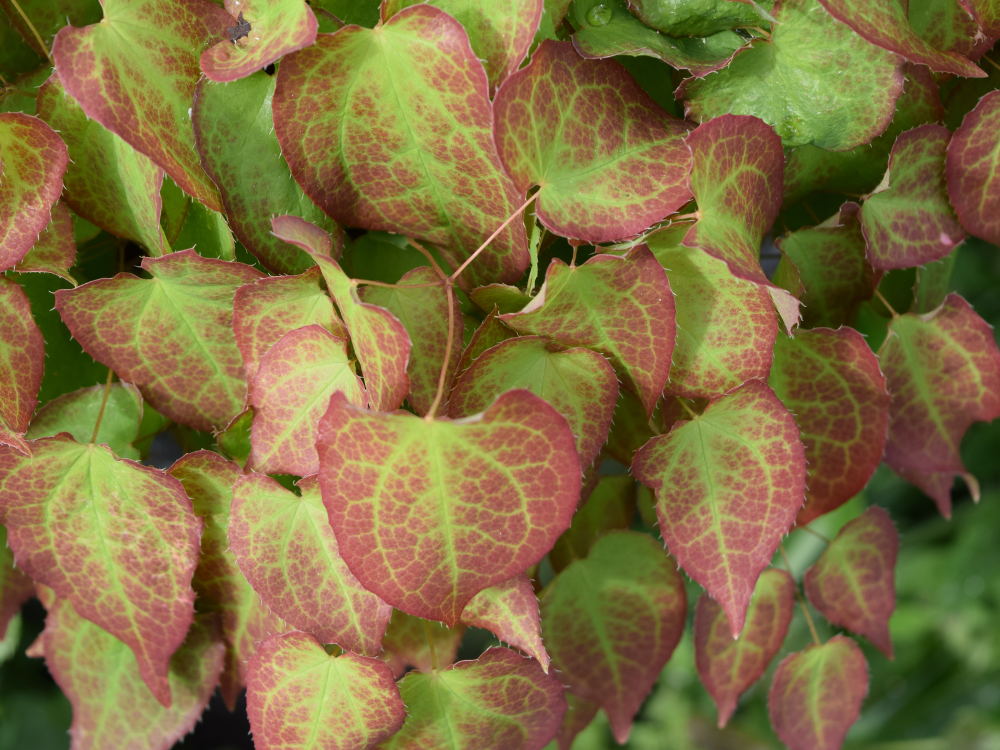
Epimedium features delicate flowers and attractive foliage, making it a superb choice for dry, shady gardens.
Woodland Phlox – Phlox Divaricata
Zones 3-8
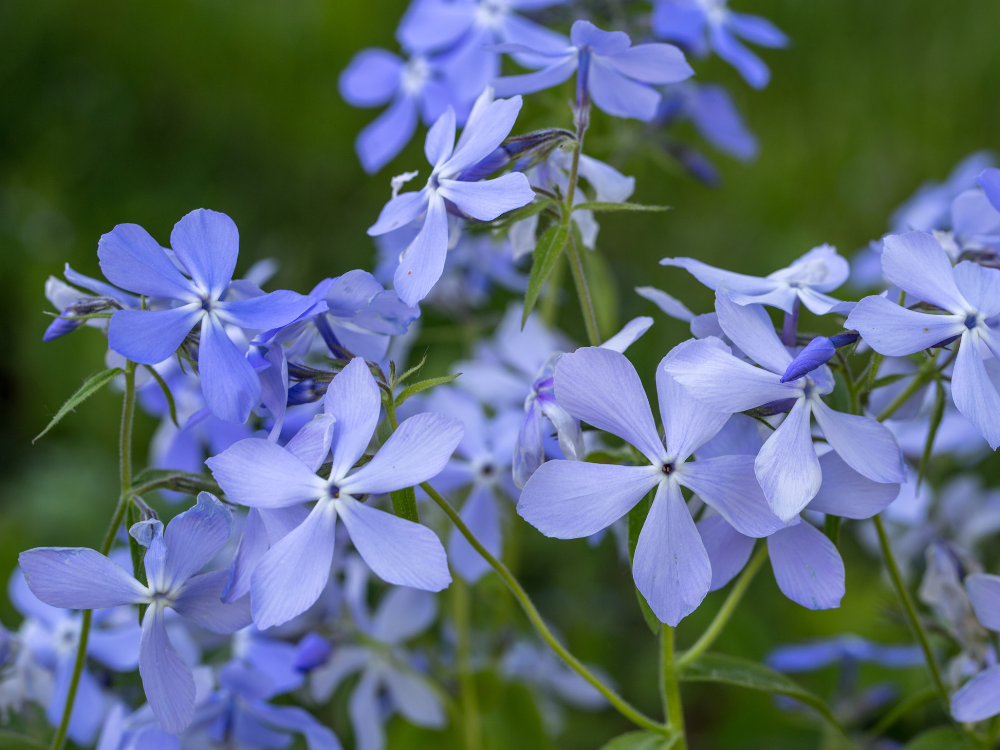
Fragrant and floriferous, Phlox Divaricata brings light lavender to blue flowers to the shade garden in spring.
Wild Ginger – Asarum Canadense
Zones 4-8
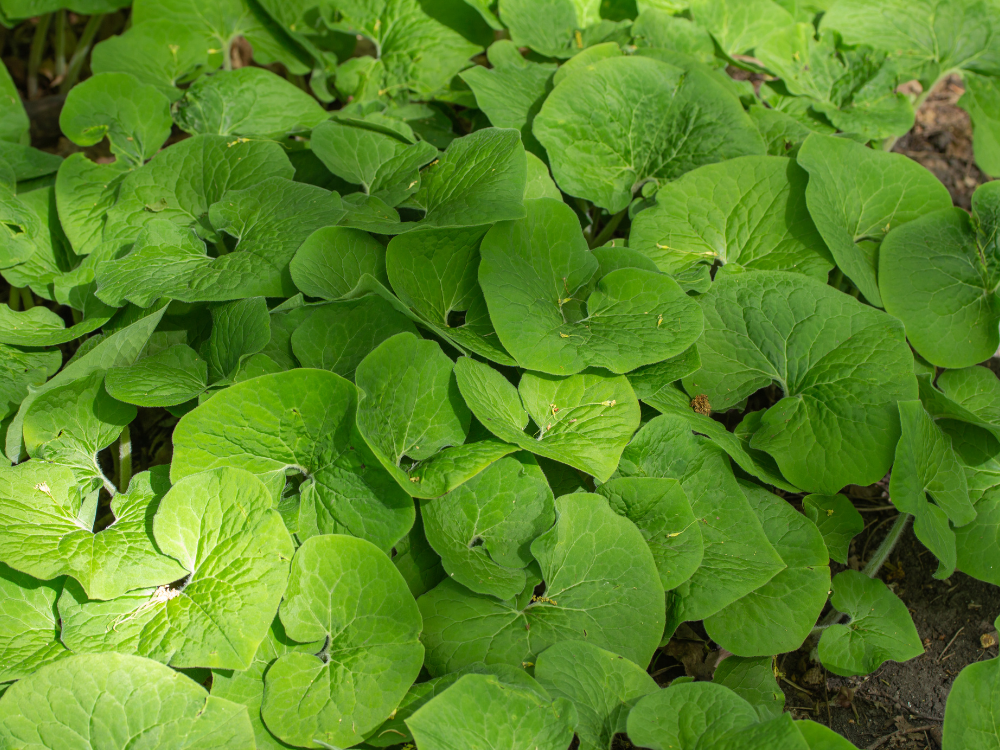
With its glossy heart-shaped leaves, Asarum Canadense creates a lush groundcover and can handle deep shade.
Blue Mistflower – Conoclinium Coelestinum
Zones 5-10
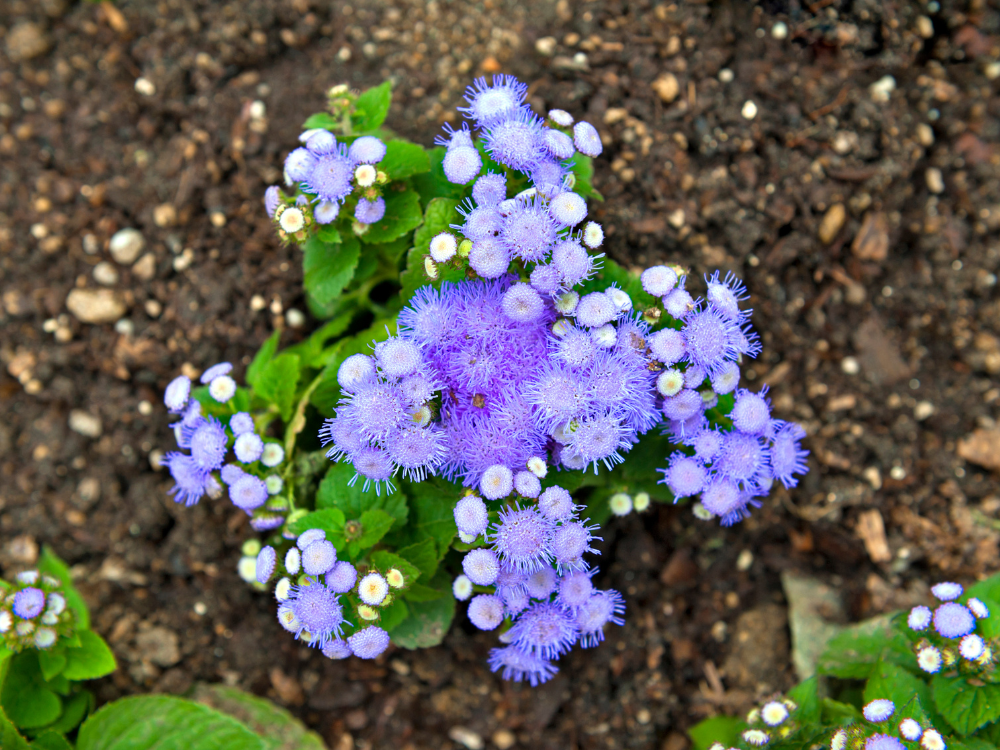
Conoclinium Coelestinum offers a unique texture with its fluffy clusters of blue flowers that attract butterflies to the shade garden.
Groundcover Plants for Sun
Groundcover plants are a vibrant solution for sunny gardens, flourishing under full exposure to the sun. They are often drought-tolerant and can suppress weeds effectively.
Ice Plant – Delosperma
Zones 6-8

The Ice Plant thrives in harsh sun and is known for its succulent leaves and vibrant daisy-like flowers.
Pink Mongolian Stonecrop – Hylotelephium ewersii
Zones 4-9
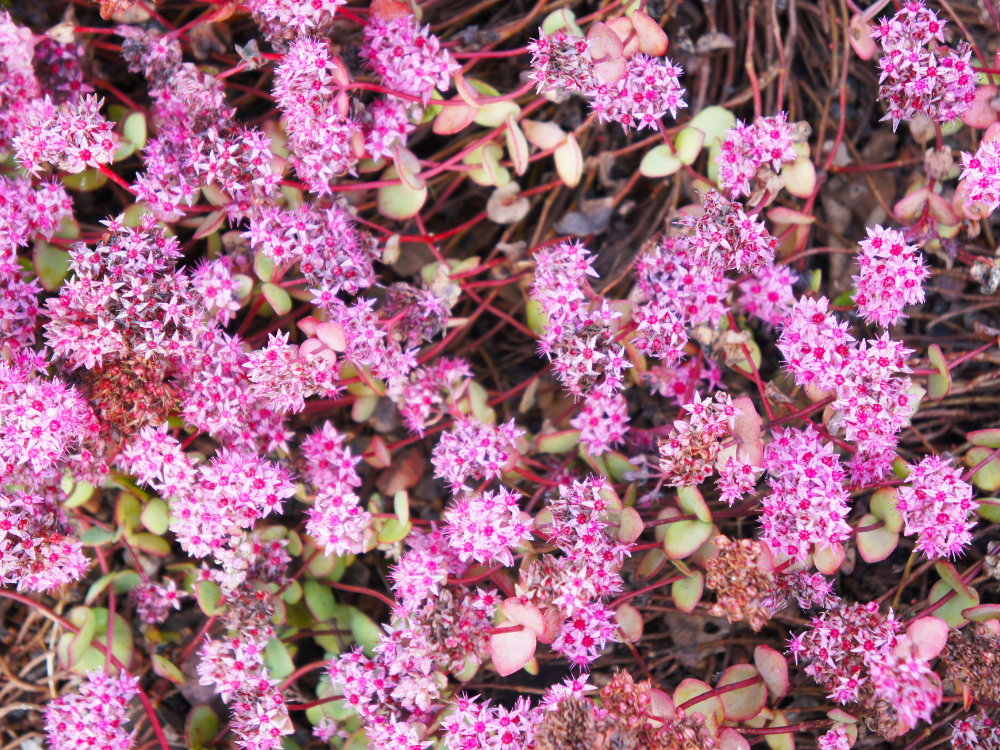
This sedum variety exhibits pink blooms and can endure both dry conditions and cold temperatures.
Turkish Speedwell – Veronica Liwanensis
Zones 3-10
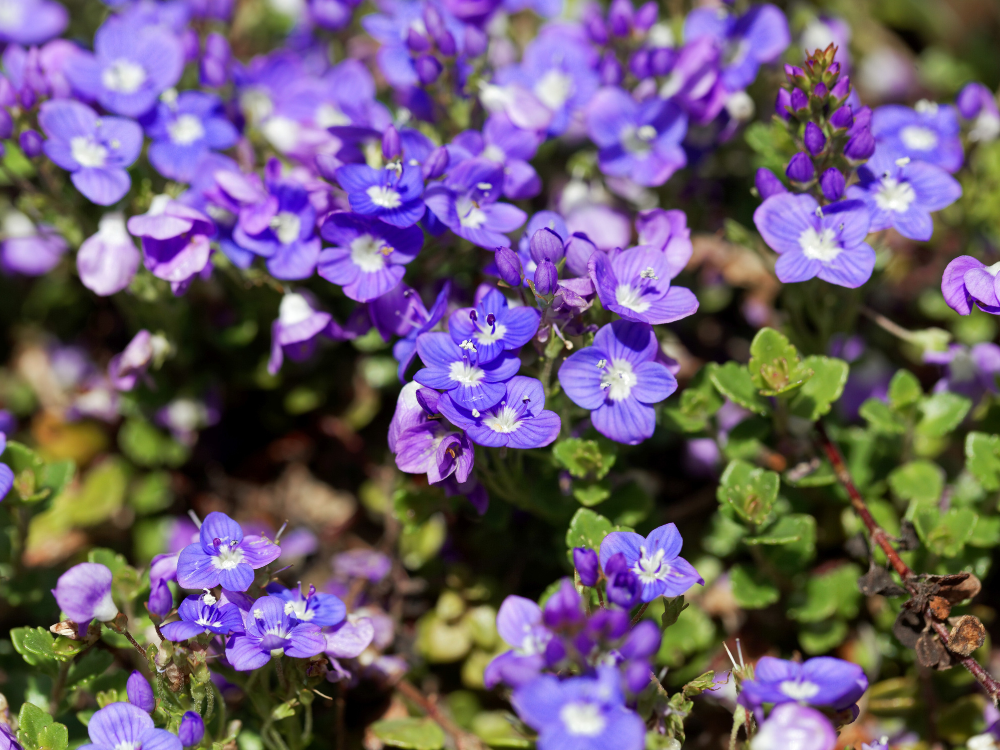
It features striking blue flowers and forms a dense mat that chokes out weeds.
Moss Rose – Portulaca grandiflora
Zones 2-12
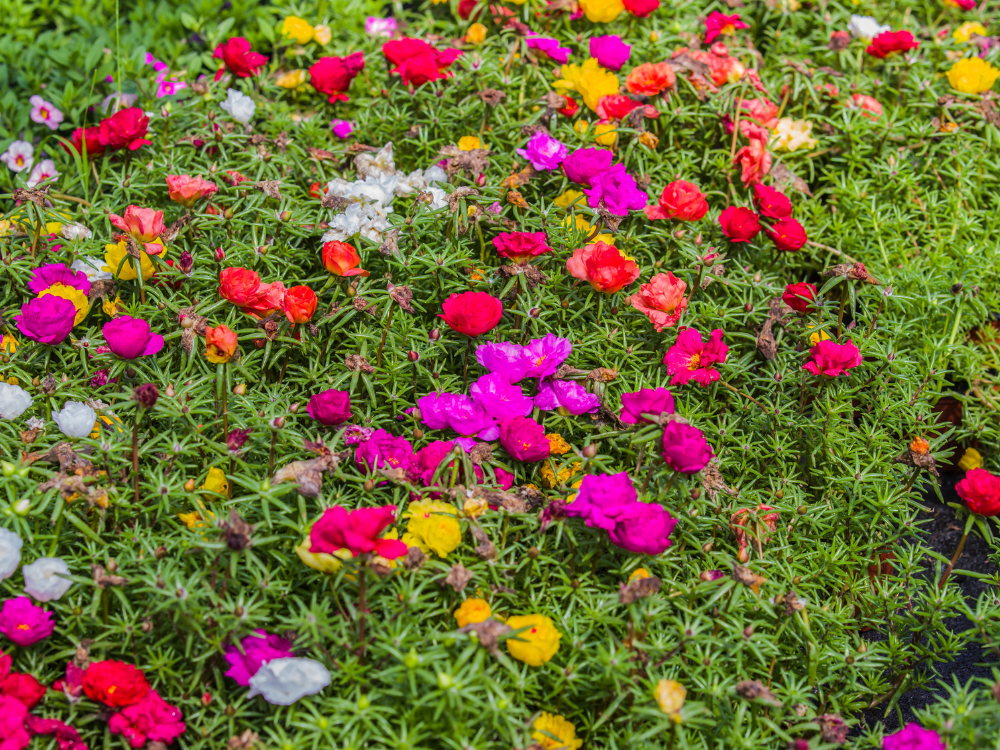
Portulaca grandiflora is distinguished by its colorful, rose-like blooms and succulent foliage.
Creeping Rosemary – Rosmarinus Officinalis “Prostratus”
Zones 8-11
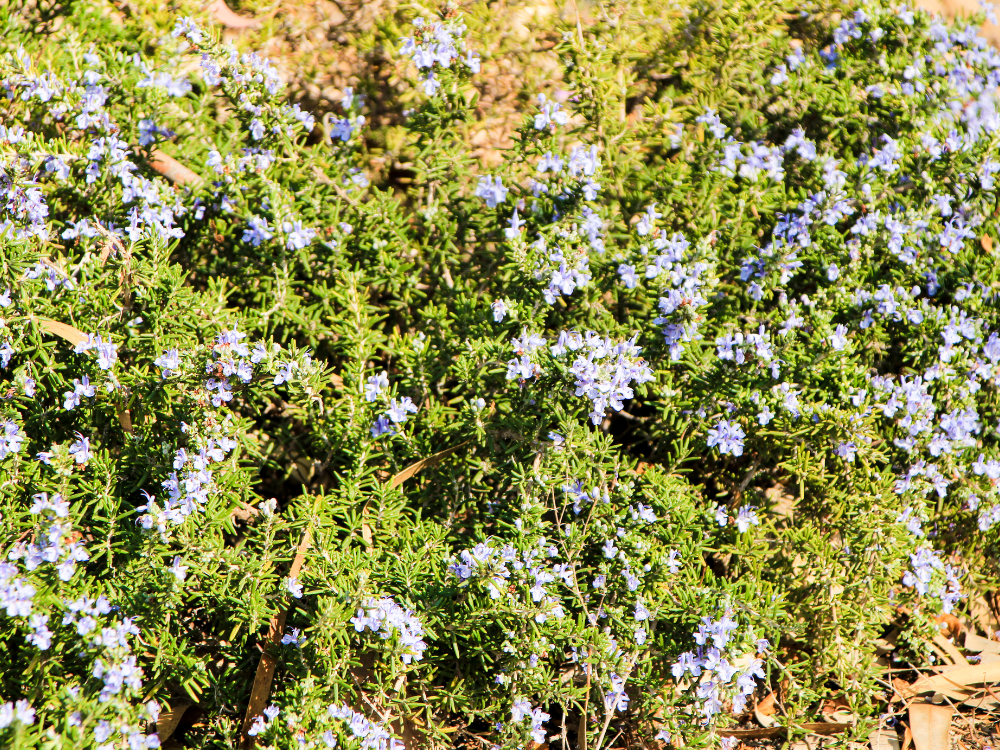
As a culinary and ornamental plant, this creeping variety offers evergreen foliage and blue flowers.
Candytuft – Iberis sempervirens
Zones 3-9
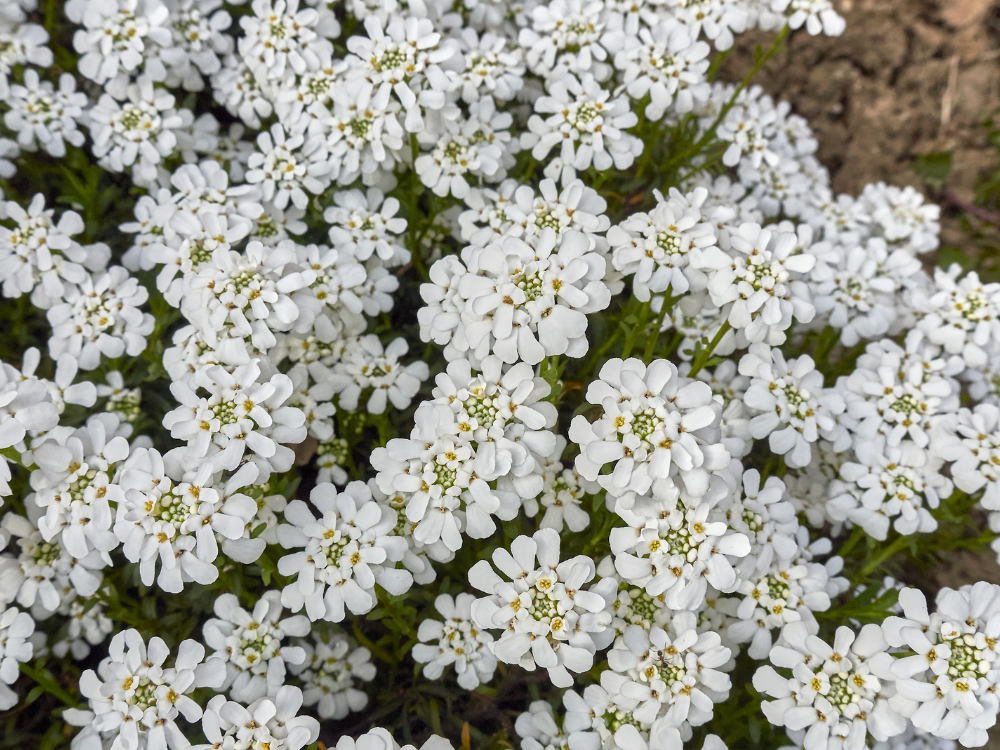
Iberis sempervirens is valued for its bright white flowers and year-round foliage.
Creeping Jenny – Lysimachia
Zones 3-10
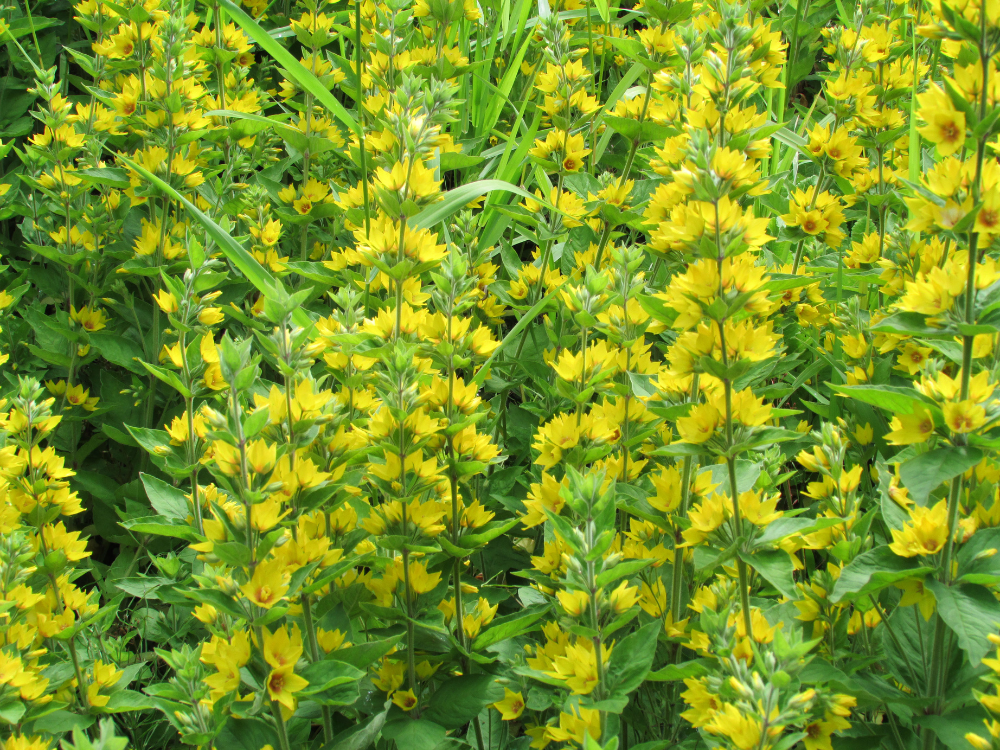
Best known for its trailing habit and vibrant green leaves, Lysimachia suits hanging baskets too.
Miniature Daisy – Bellis perennis
Zones 4-8
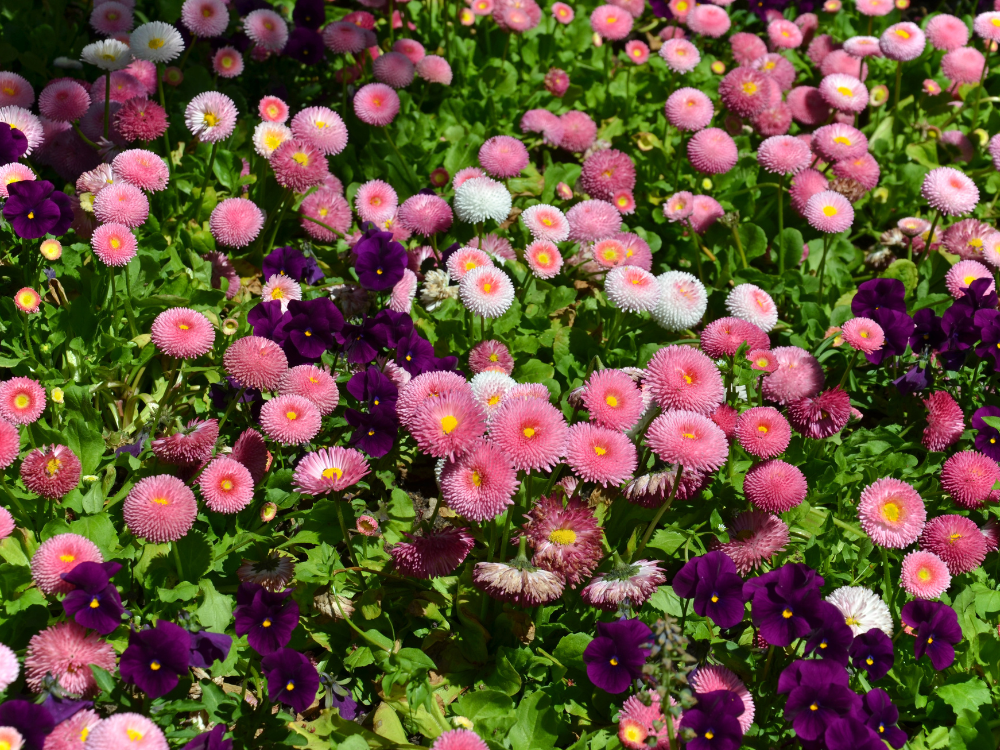
This daisy forms a low carpet adorned with classic white or pink flowers.
Soapwort – Saponaria ocymoides
Zones 4-8
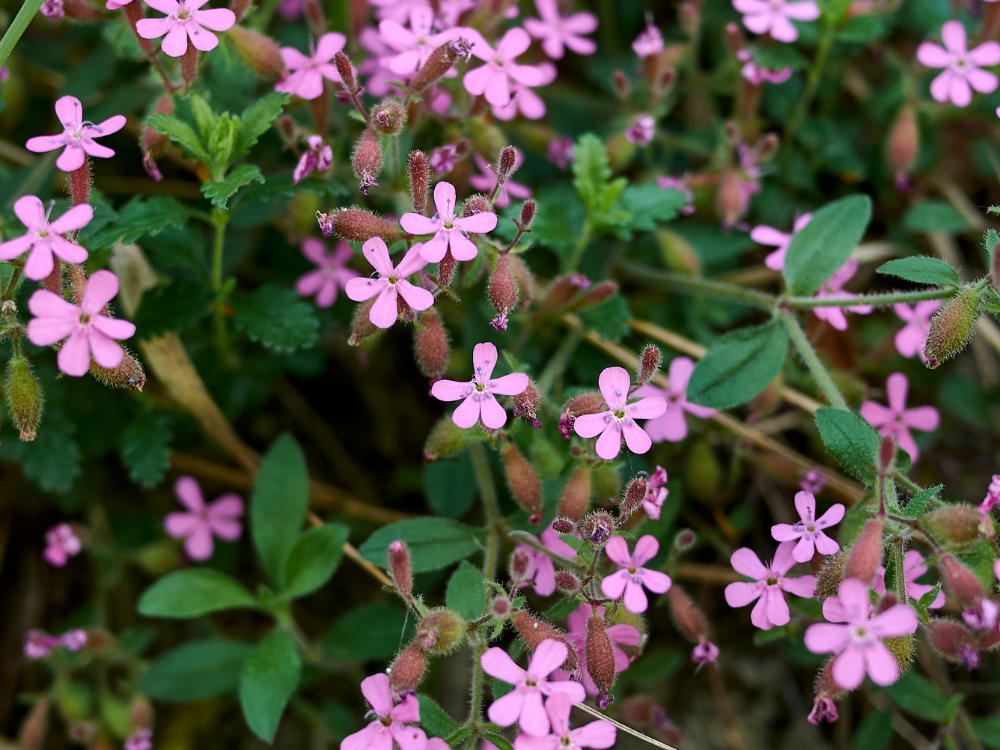
Saponaria displays prolific pink blossoms and serves as an excellent ground-hugging plant.
Wild Strawberry – Waldsteinia fragarioides
Zones 4-7
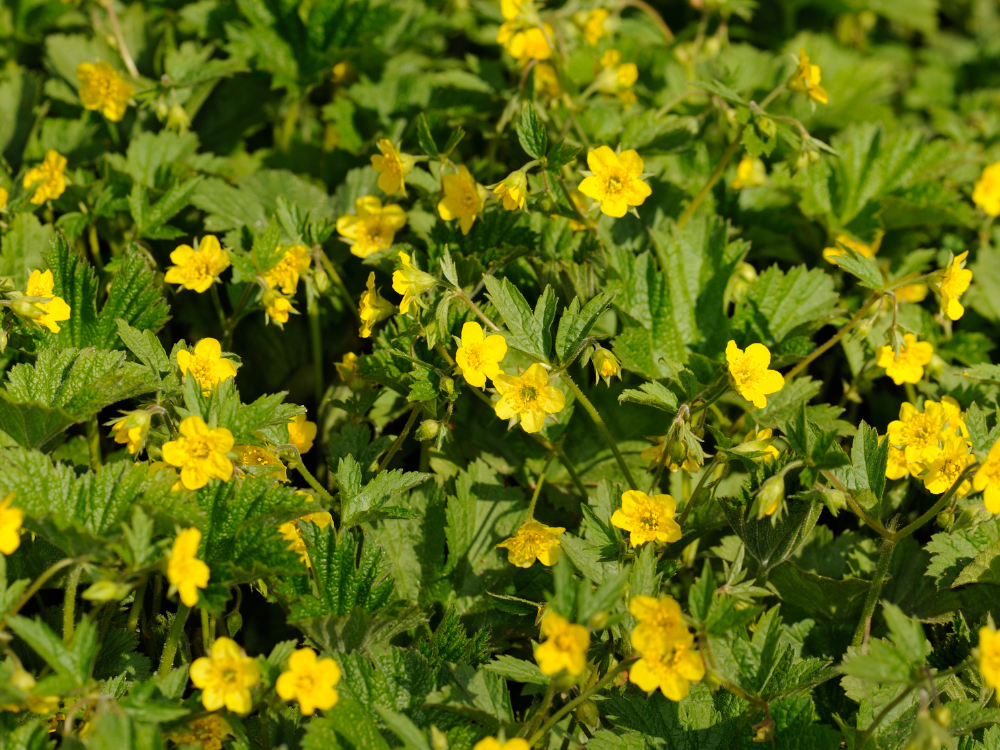
It imitates strawberry plants in leaf shape and spreads quickly to form a green mat.
Common Thyme – Thymus vulgaris
Zones 5-9
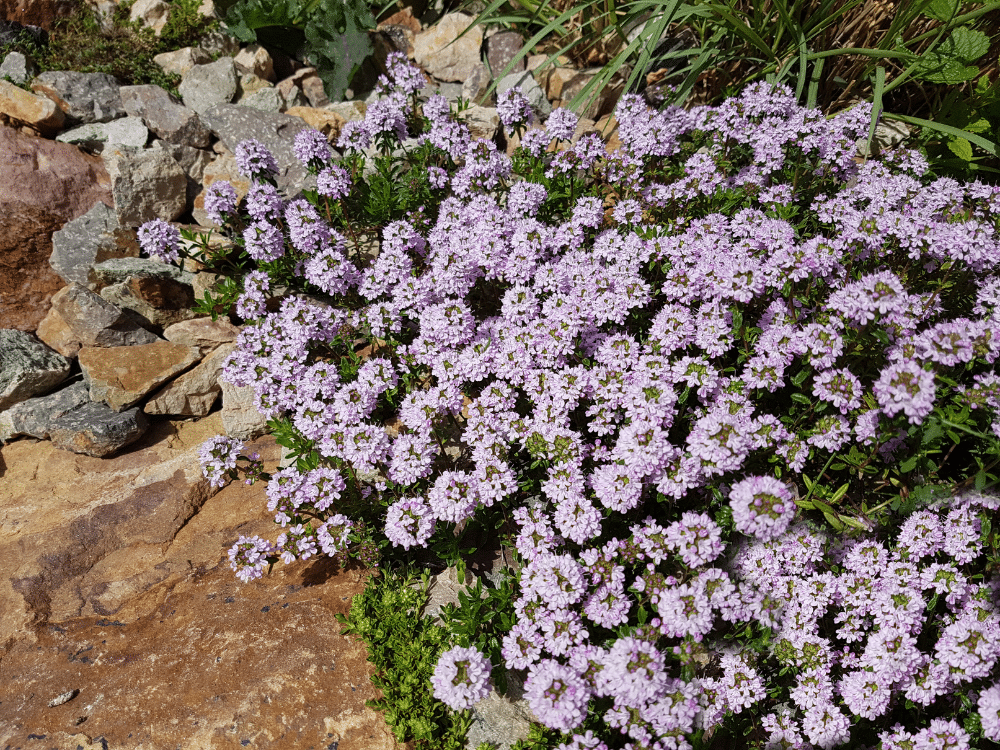
Thymus vulgaris, with aromatic leaves, is as practical in the kitchen as it is in the garden.
Dwarf Morning Glory – Evolvulus glomeratus
Zones 9-11
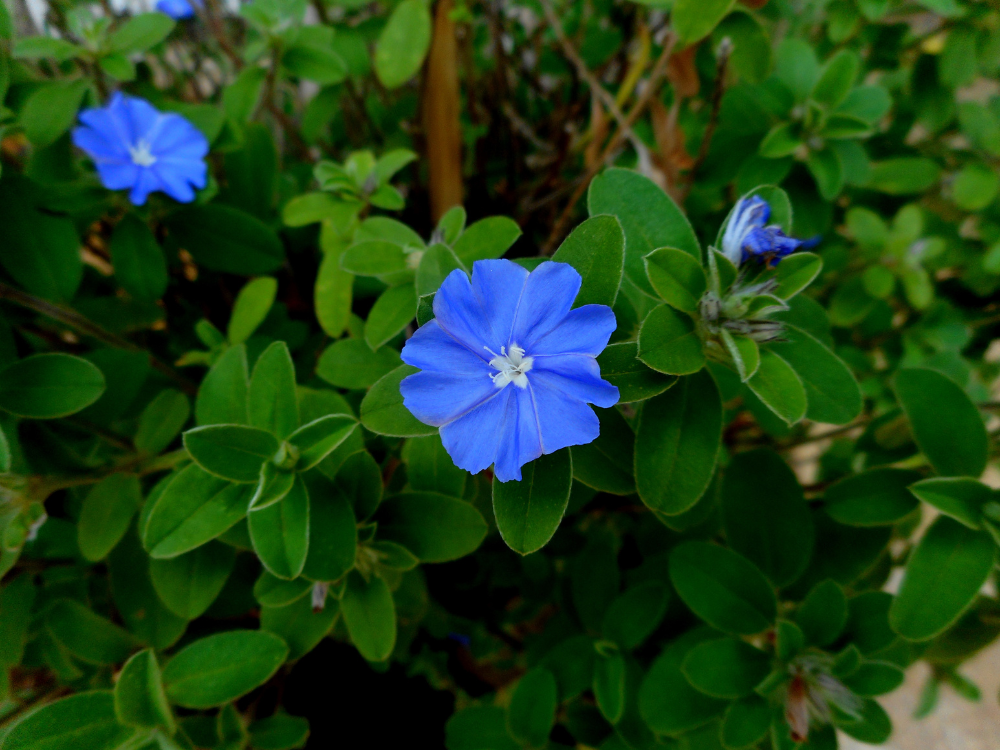
Evolvulus provides petite blue flowers and is a non-invasive species, ideal for sunny locations.
Blue Star Creeper – Laurentia fluviatilis
Zones 5-9
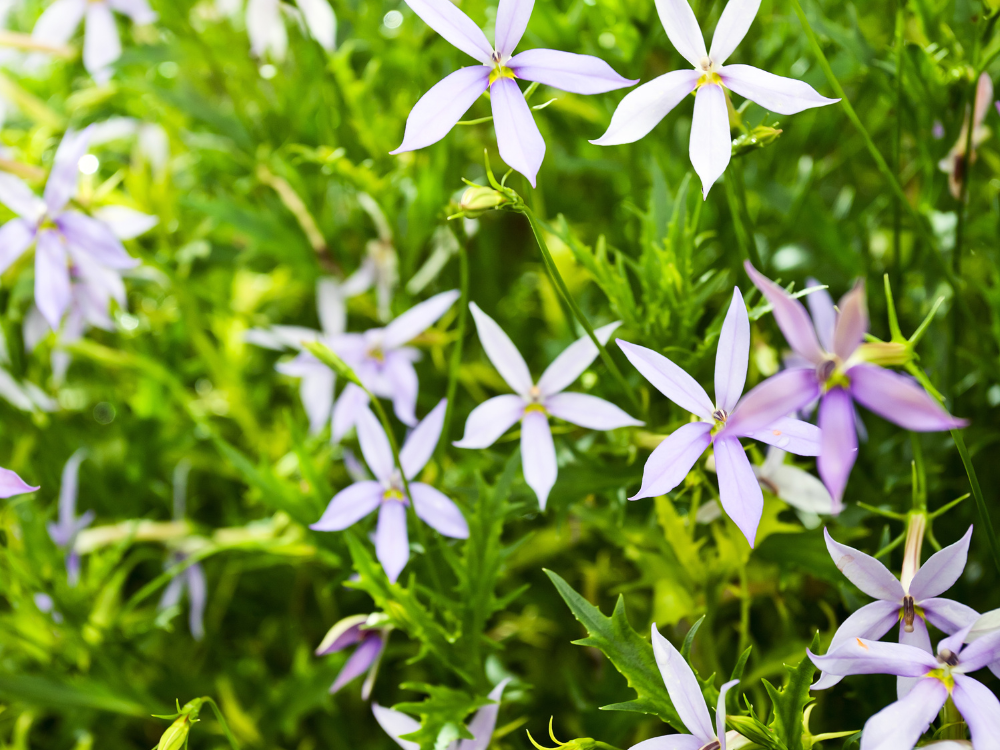
The delicate blue flowers of Laurentia form a thick, starry carpet demanding little maintenance.
Roman Chamomile – Anthemis mollis
Zones 3-8
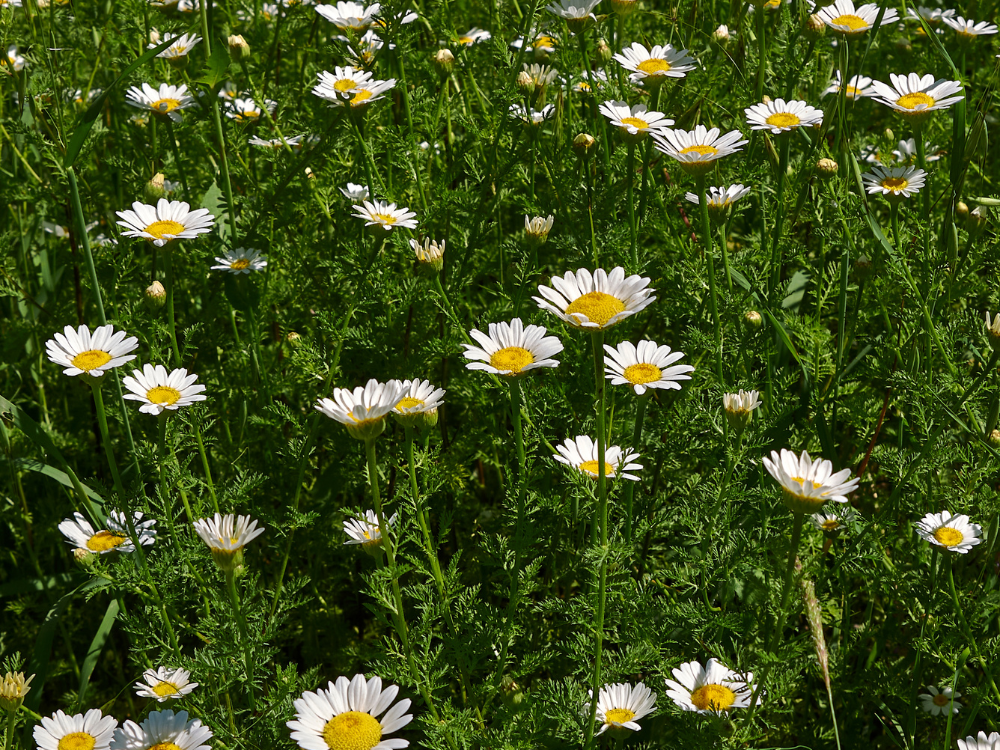
Anthemis has feathery foliage and daisy-like flowers, contributing a soft texture to the landscape.
Dwarf Plumbago – Ceratostigma plumbaginoides
Zones 5-9
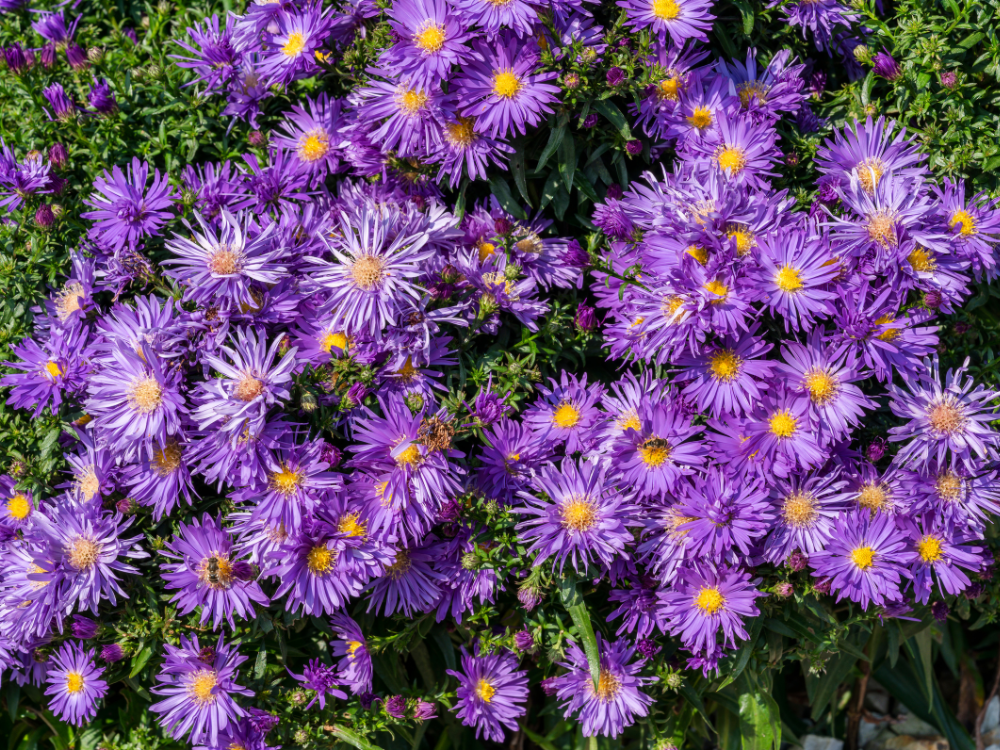
This plant showcases deep blue flowers and is noted for its late-blooming quality.
‘Blue Spruce’ Sedum – Sedum reflexum ‘Blue Spruce’
Zones 3-9
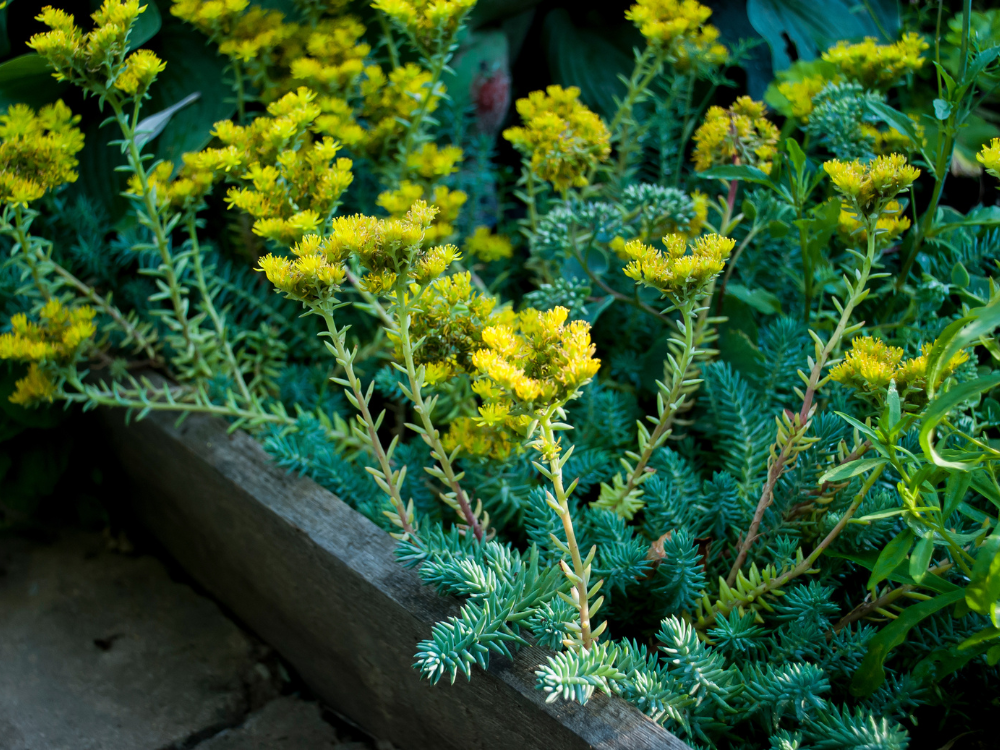
Its needle-like foliage resembles a blue spruce, and it’s a hardy choice for dry soils.
Ornamental Strawberry – Fragaria chiloensis
Zones 7-10
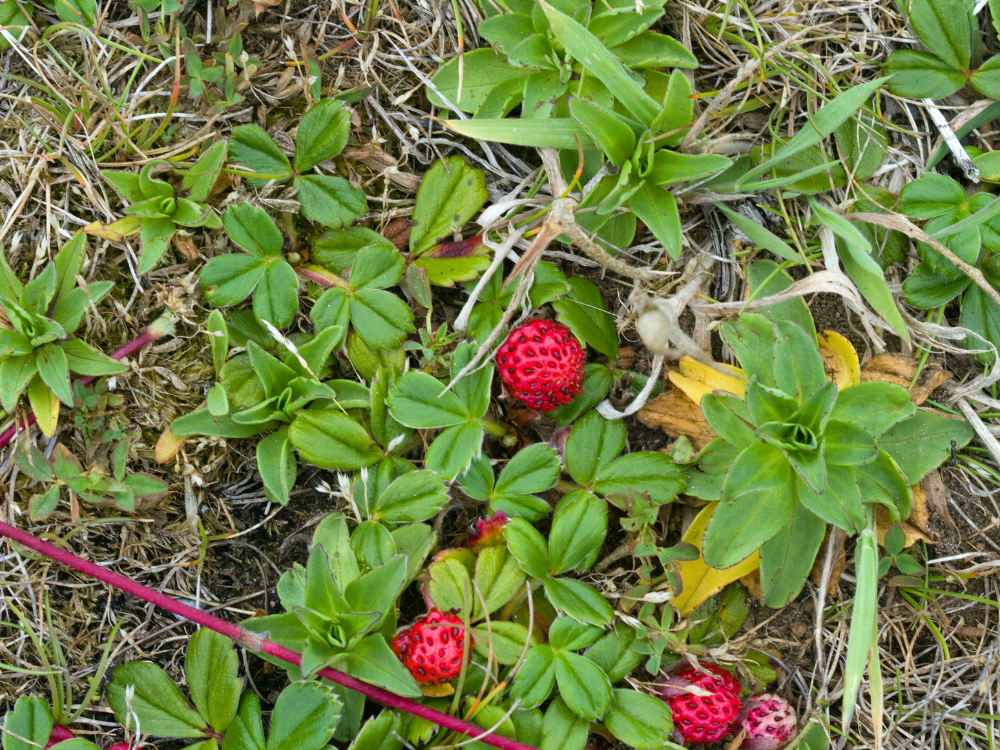
Similar to wild strawberry, this variety offers ground cover. It also has the added charm of white flowers.


